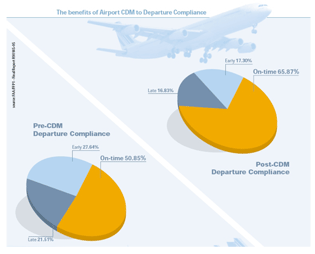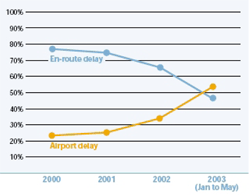The origins of CDM as the idea go back to the late 1980s and early 1990s and are to be found in the United States. While in Europe the lack of en-route capacity was the biggest concern, US airlines were struggling with ever increasing problems on the ground. If an airline at a busy airport fails to inform in good time the airport operator and ATC that it had cancelled a flight, a valuable airport slot will be lost and others will not be able to use it either.

If a major hub operator airline needs to push back its aircraft in different directions depending on the runway in use for take off, but is not informed of runway changes and has no means to check on its own, it will often find its planes facing in the wrong direction and a longer than anticipated taxi time…. There were several examples of similar but equally simple, yet major, problems affecting airports all over the USA, as the small airline/FAA group formed to investigate soon found out.
Apply some common sense to this, they recommended. Tell the truth about those cancelled flights, work together, share what you know, use common sense. They did and the two airports from which the above examples come, Philadelphia and Atlanta, experienced an almost miraculous improvement in punctuality and predictability. Collaborative Decision Making, or CDM for short, was born!

Although Europe was mostly preoccupied with en-route problems, a few visionary souls saw clearly that European airports would face congestion similar to their US brethren in the not too distant future. It was the airlines and their worldwide representative, the International Air Transport Association that brought the CDM concept to Europe and after some initial resistance, CDM was embraced also on this side of the Atlantic.
First and foremost, that CDM did originate in the airport environment and was so effective because of the multitude of partners involved. Their original attitude of working in almost total isolation, blissfully ignoring what the others were doing, was fertile ground for improvement and even a little common sense applied to the processes brought substantial improvements.
Secondly, but no less importantly, the history of CDM shows that it is concerned primarily with people and attitudes, not technology. Being open, willing to share and acting on shared information are human categories, not technological ones.
Source: EUROCONTROL






 Map of Airport
Map of Airport
